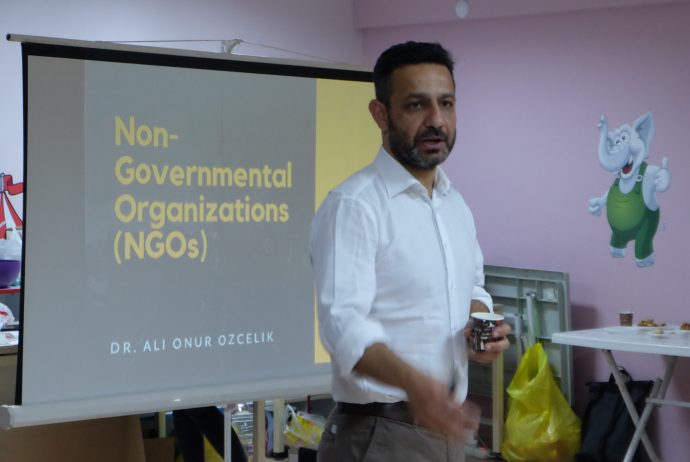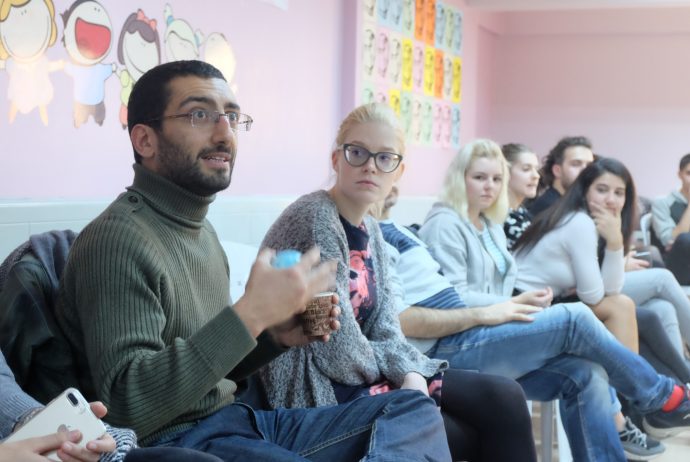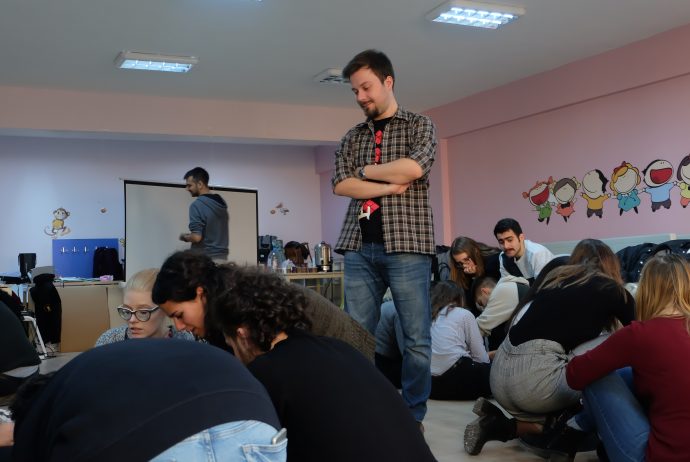
Back to NGO Official Website







Sustainable nongovernmental organizations (NGOs) make essential contributions to the environment, society and the sustainability of the world at large. They’re responsible for important research, aid, consumer awareness, conservation and so much more, and it’s important for you, as a sustainability student, to be aware of the most influential organizations working in sustainability today. These NGOs often offer valuable resources to students, including research, hands-on internships and volunteer opportunities. Read on to find out how 14 of the most influential sustainability NGOs are making a difference, and identify which ones you should get involved with.
Before I blast the NGO community, let me say I consider them as a good friend. Friends tell each other when their collar is twisted, when kale is stuck in their front teeth. This is the spirit of this column.
Last week I wrote about my favorite sustainability experience: the Amazon soy moratorium. Now, I write about my least favorite and most frustrating endeavor: the quest for sustainable palm oil. It’s a case study of how NOT to create transformational change.
This is not about finger-pointing and blaming. I believe the NGOs involved with this are very well intended. However, they need a wake-up call because they are unwittingly suffering four common sins that stymie sustainability progress.
Just 10 percent of palm is purchased as certified sustainable today — 14 years since the Roundtable for Sustainable Palm Oil (RSPO) formally was initiated in 2002.
Sure, companies can do more, yet many have made commitments for zero deforestation and set specific sustainable palm oil goals. They need NGO help to get there.
Certainly, governments play a big role, too. Suffice to say, they are imperfect. Yes, economic development is winning over environmental preservation. Eighty-five percent of palm oil comes from Indonesia and Malaysia, where citizens see palm production as their pathway from tin shacks to modern homes with tiles and toilets. NGOs need to guide them in this delicate environmental/economic balance.
The most tangible and fixable part is the proliferation of NGOs not practicing what they preach to companies. The palm NGOs are not aligned, not working collaboratively and not showing flexibility. This creates havoc and paralysis in the marketplace.
Let’s look at the five common ways of NGOs gone astray:
You’d think from following the common NGO narrative that palm oil is one of the most environmentally destructive crops of all time. In fact, its ecological impacts are the cream of the crop versus others oils. According to the CI report on Palm Oil (PDF) (a great, pragmatic guide for companies):
“Oil palm trees are incredibly efficient, yielding more oil on the same amount of land than any other leading oil crop — four to 10 times more than soy, rapeseed (canola) or sunflower.”
According to an outstanding Guardian in-depth journalistic report, alternatives to palm oil use two to eight times more fertilizers and five to 10 times more pesticides.
OK, this doesn’t mean we ignore the impacts on orangutans, climate change and deforestation. But don’t demonize a product that has so many positive attributes. Don’t you realize you’ll infuriate the people that grow and produce this stuff? Then they stiffen up and resist.
RSPO has been picked apart as imperfect. It is.
But it’s a good, legitimate, inclusive effort that NGOs should support and build upon. NGOs should use the “slippery slope” principle more. Get something started, and see it improve over time.
All would benefit from digesting and implementing Dr. Cialdini’s Six Principles of Persuasion.
His fourth principle, “Consistency,” describes how asking for a small commitment can lead to a bigger one. When homeowners are asked to put a small postcard in their window promoting safe driving in the neighborhood, they are 400 percent more willing to put larger signs on their lawn a few weeks later. Consider the RSPO a postcard and let it grow from there.
Perfectionism produces “complexism” as well. I made the word up, because there is no term for how relentless, detailed-oriented, scientific and exhaustive NGOs sometimes can be when it comes to developing sustainability standards, principles and metrics. Businesses say the simpler the better. NGOs say the thicker the better. The RSPO tries to make them happy by producing a set of standards that only an expert can comprehend.
Go see the RSPO Principles and Criteria (PDF), all 71 pages of it. I can see the corporate purchasing manager relishing this.
You can’t treat every product, crop or material the same way. Coffee, beef and diamonds are different from palm oil, mostly because palm could be the most invisible, far-removed ingredient in existence. Check out any label for your favorite bakery or personal care item. Palm is far down the list, and much of palm is converted to more than 100 derivatives and oleo chemicals, confusing purchasers even more. Here are just the “As”:
You can’t pressure Western companies who are only 15 percent of the palm oil marketplace and expect systemic change. Most of palm is used in Asia.
You can’t just go after big brands and expect them to manage a supply chain that has them seven stages removed, starting with the smallholders, to mills, then plantations, to storage facilities, refineries, ingredient manufacturers and then product manufacturers, then into a final product a retailer sells, such as ice cream, a granola bar or shampoo — with palm as a minute ingredient.
The last thing we need is competition over the rules of the game, and then to change the rules. That’s what this 14-year sustainable palm oil journey often feels like.
NGOs have promulgated various sustainable palm alternatives. They are using too many sticks and not enough carrots.
Imagine a world in which the top 15 NGOs working on sustainable palm oil agree on the approach, principles and measures. This would instill corporate and governmental confidence on a unified direction for all to move forward together.
On the bright side, the table is set for a sustainable palm tipping point. Traders and processors, representing 80 percent of the trade for palm, have made commitments, so the challenge is to implement these commitments with a positive, collaborative and market-friendly support from the NGO community. Allow for more flexibility on how to get there. Encourage innovation, too.
Palm is not the enemy. It is how it is grown and managed that counts.
If you keep beating up Western companies trying to make this work, they eventually will walk away. Or companies will clean up their supply chains, exit bad relationships and go with a few big players. This will not solve the problem and it will just create a niche, premium market.
Sustainable palm should be the norm, the default, not a niche.
OK, my friends. I’ve let you know your fly is open. Now is the time to shift to a positive approach, steeped in market practicality, with an aligned view of the future.
1. What is Sustainability?
A sustainable organisation is one that can continue its activities into the future.
Before any activity is started, the NGO has to ask “How long can we continue?” Not how long we would like to continue, but how long we definitely can continue – to provide, supervise, motivate, train or do what the project needs.
Once you are clear about the lifespan that you can guarantee, then you can fit your activities to the time you have. There may be pressure to plan long-term projects even when the money is not around: your colleagues will be optimistic and assume that funding will appear; and they hope that their jobs and salaries will continue into the future. But it is not that easy.
2. Sustainability for projects
If you have projects which help your beneficiaries, then:
or they should be able to survive on their own if and when you stop your financial and supervising support.
So you should have built a degree of community participation and/or contribution in cash and kind in order to guarantee a minimum level of ownership. Income-generating activities should be making a real income for the target groups and therefore be more than just social schemes. The management of the money involved should follow the same rules as money management within your NGO.
Example: In Puntland, a Health Centre had been set up by a European NGO and had provided health care. But after six months the NGO lost it source of funding and withdrew. A Micro credit programme, recently started with a remit to help women, decided to keep funding the Health Centre out of its own profits to continue a minimum package of vaccinations and family planning.
There are important issues of sustainability if you train people to do a job at village level. Be very careful of, for example, training people in health matters, unless the Ministry of Health or someone else are going to take over responsibility for the trainees and supervise them.
Why? Look at Water and Sanitation projects, where projects need a Hygiene Education component and often train village people in health matters. Then the project ends; the trainees have a certificate, little training and no supervision. They may buy a white coat, start giving injections – perhaps knocking out the teeth of children with diarrhoea or branding them with red-hot bicycle spokes. They can do harm. The same thing happens when NGOs start so-called Primary Health Care projects, train community health workers but disappear after a year. So:
! Be careful of creating a group of workers. Either they should have a future, can be rewarded and supervised; or their task should be self-limiting
It is possible to ensure financial sustainability but for most NGOs it demands a lot of work. You funding can come from:
many tiny donations from community supporters;
fewer but larger donations or legacies;
one or more National or International funders;
income from savings;
EXAMPLE: A WORKSHOP ON FUNDRAISING FOR A HUMAN RIGHTS NGO IN LESOTHO
This NGO (CLRAC) organised a Workshop on Fund-raising for both staff and Board Members. Together, over three days, the participants worked through the following:
- a brief evaluation of fund-raising by CLRAC in the past years: conclusions;
- how to plan the funding needs for CLRAC and set realistic objectives for the period 2000-2002;
- development of a fund-raising strategy, including: planning/timing of projects and CLRAC organisational costs in need of funding;
- capacity assessment in CLRAC to conduct fund-raising; how to build in fund-raising capacity: human resources development and organisational development;
- how to target donors, local and international – and what their requirements are;
- how to write a proposal for project funding;
- an outline for financial reporting;
- a plan to write a Strategic Planning document for implementation of fund-raising by CLRAC;
- a meeting with a Maseru-based donor representative.
Because the Board members and staff followed the Workshop together, a feeling of commitment and co-working also developed; the Strategic Planning Document got written and some money has been raised.
Accepting the mind-set that will help you succeed:
Non-profit organisations in the South are steadily becoming more professional. For NGOs seeking grants, one of the most important steps is a mental one. They accept that there are no quick fixes, no magic shortcuts. The steady, regular work of your organisation – your board members, your staff responsible for funding – all this will develop an effective strategy through many small steps.
Part of the process is to be clear about what you are – each of you, each a very special NGO – and to make that clear in the documents that go to the possible funder. A Mission Statement that is enthusiastic, imaginative and creative will help a lot.
Can you answer the following questions clearly and directly?
» For more in-depth guidance, download folder A Guide to Fundraising
5. Organisational and Institutional Sustainability
Organisational sustainability:
An organisation is like a plant. There is a part of it that is above ground – stem, leaves, fruit. These are the organisational aspects that an outsider can see – the projects, the administration, the capacity building. But there is also the part below the ground – the roots, or institutional aspects of the organisation. This part is strong if the NGO is serious about its purpose, has strong objectives and convictions. If the boss and staff have lost their vision, the roots are weak but may still be rescue-able and a guarantee that the NGO can survive. If the roots have been eaten by pests, no matter how well the office is run, the NGO will die.
Institutional sustainability:
An NGO which is concerned about long life might choose to do a SWOT – Strengths, Opportunities, Weaknesses, Threats. For details see The purpose of doing a Swot is twofold; firstly it enables the NGO to find the issues which everyone agrees are strengths, weaknesses etc. The next step is to work with these issues, establish the relationship between them, select the ones which are priority and then transform them into policy issues or Things-to-be-Done.
EXAMPLE: A PROBLEM OF INSTITUTIONAL SUSTAINABILITY
An Asian NGO had the stated aim of improving the skills of farmers throughout the country. However there was also an unwritten aim, held by the boss and most of the Board; that was to spread the culture of the majority ethnic group into minority areas. This aim had changed the nature of services for the worse. There was no serious decentralisation and all training was in the majority language even where the farmers could not understand it. Project workers were becoming increasingly demoralised.
This kind of Institutional problem is fundamental, is corrupting and would probably sabotage any attempt to build a good strong NGO. To bring the problem into the open and make the organisation an honest one would be very difficult – but it could be done in the future.